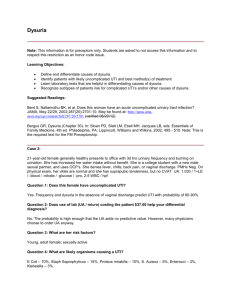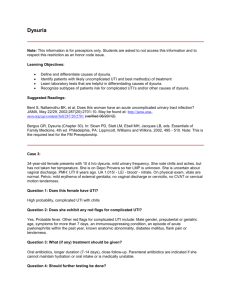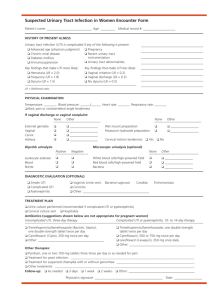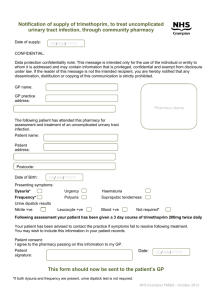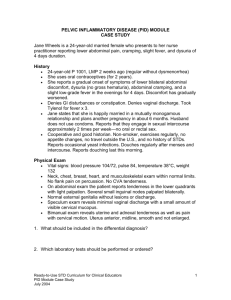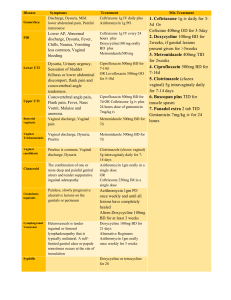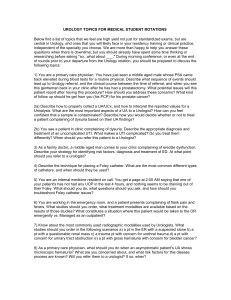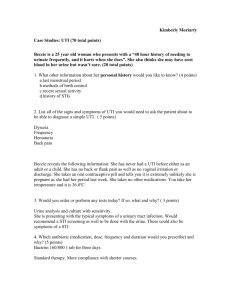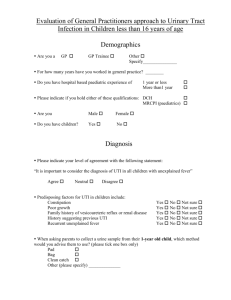Case 1
advertisement
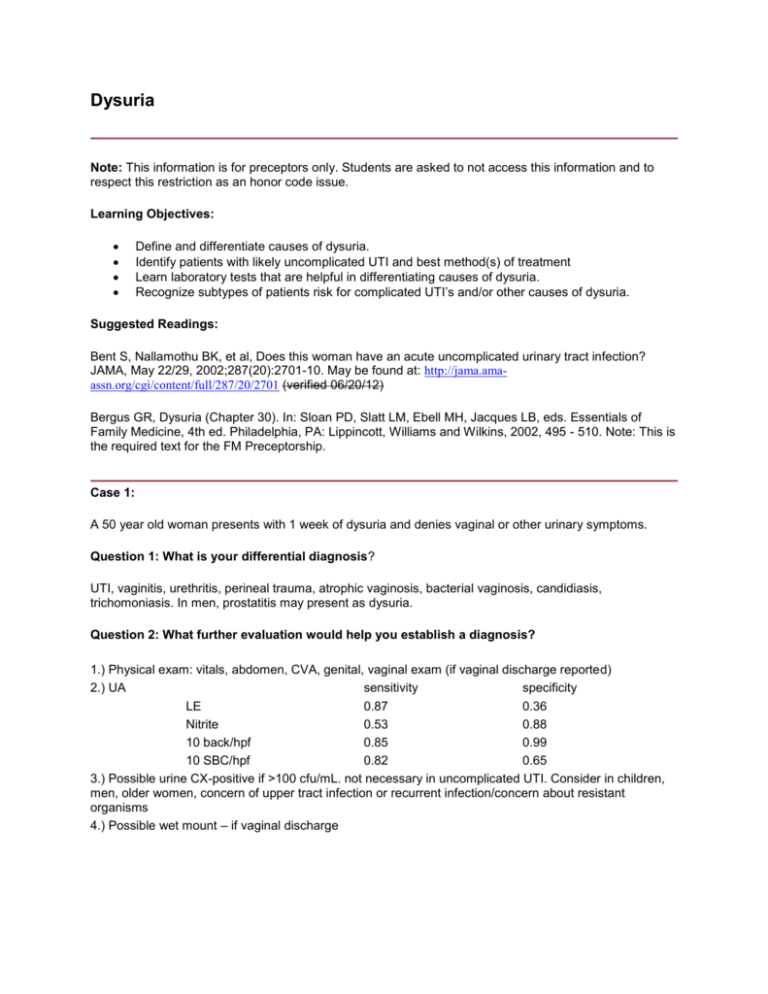
Dysuria Note: This information is for preceptors only. Students are asked to not access this information and to respect this restriction as an honor code issue. Learning Objectives: Define and differentiate causes of dysuria. Identify patients with likely uncomplicated UTI and best method(s) of treatment Learn laboratory tests that are helpful in differentiating causes of dysuria. Recognize subtypes of patients risk for complicated UTI’s and/or other causes of dysuria. Suggested Readings: Bent S, Nallamothu BK, et al, Does this woman have an acute uncomplicated urinary tract infection? JAMA, May 22/29, 2002;287(20):2701-10. May be found at: http://jama.amaassn.org/cgi/content/full/287/20/2701 (verified 06/20/12) Bergus GR, Dysuria (Chapter 30). In: Sloan PD, Slatt LM, Ebell MH, Jacques LB, eds. Essentials of Family Medicine, 4th ed. Philadelphia, PA: Lippincott, Williams and Wilkins, 2002, 495 - 510. Note: This is the required text for the FM Preceptorship. Case 1: A 50 year old woman presents with 1 week of dysuria and denies vaginal or other urinary symptoms. Question 1: What is your differential diagnosis? UTI, vaginitis, urethritis, perineal trauma, atrophic vaginosis, bacterial vaginosis, candidiasis, trichomoniasis. In men, prostatitis may present as dysuria. Question 2: What further evaluation would help you establish a diagnosis? 1.) Physical exam: vitals, abdomen, CVA, genital, vaginal exam (if vaginal discharge reported) 2.) UA sensitivity specificity LE 0.87 0.36 Nitrite 0.53 0.88 10 back/hpf 0.85 0.99 10 SBC/hpf 0.82 0.65 3.) Possible urine CX-positive if >100 cfu/mL. not necessary in uncomplicated UTI. Consider in children, men, older women, concern of upper tract infection or recurrent infection/concern about resistant organisms 4.) Possible wet mount – if vaginal discharge
